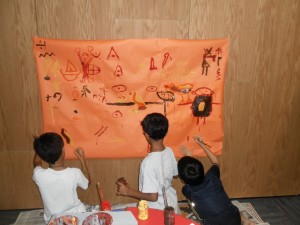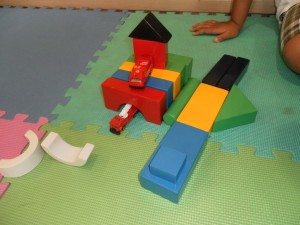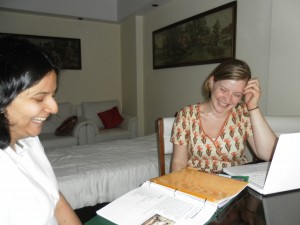 Revised Day One when we felt we had given too many “jobs” to kids: putting away bag + placing shoes + making nametag + coloring attendance picture was enough for the younger kids. Forget about a pretest.
Revised Day One when we felt we had given too many “jobs” to kids: putting away bag + placing shoes + making nametag + coloring attendance picture was enough for the younger kids. Forget about a pretest.
For the older kids, we trod warily… And they filled out pretest page after pretest page for… how long? At least 30 minutes, probably 45. By this time, Emily and I had bought our watches but my sense of time and ability to keep straight my trampolining thoughts was somewhat compromised.
On Day Two, we scaled back. We divided up curriculum setup responsibilities deliberately; we accepted the assistance of program helpers; we rotated in teachers for end-of-the-day meeting leading; we even excused little old me for the older kids’ arrival + snack + meeting period so that I could address the writing of our newsletters. Some kids announced they were done with mural painting and asked to play. “You have one more job,” one of us would say, and challenge them to paint a figure or hieroglyph they’d never taken on before, or dab their hieroglyphic carved soap bar with brown paint. Where is the limit between order and imposition? Should we be giving them these jobs? Like the question of whether to call this school, is “job” the correct appelation?
On Day Three, I hope we’ll continue finding our rhythm. We learned all of the children’s names. The newsletter templates are written. The system for recording kids’ quotes is established. And my five-year hiatus from early childhood teaching has been broken… and I’m getting broken in… and my broken body is coming back, again, like the persistent zombie from many a horror film.



